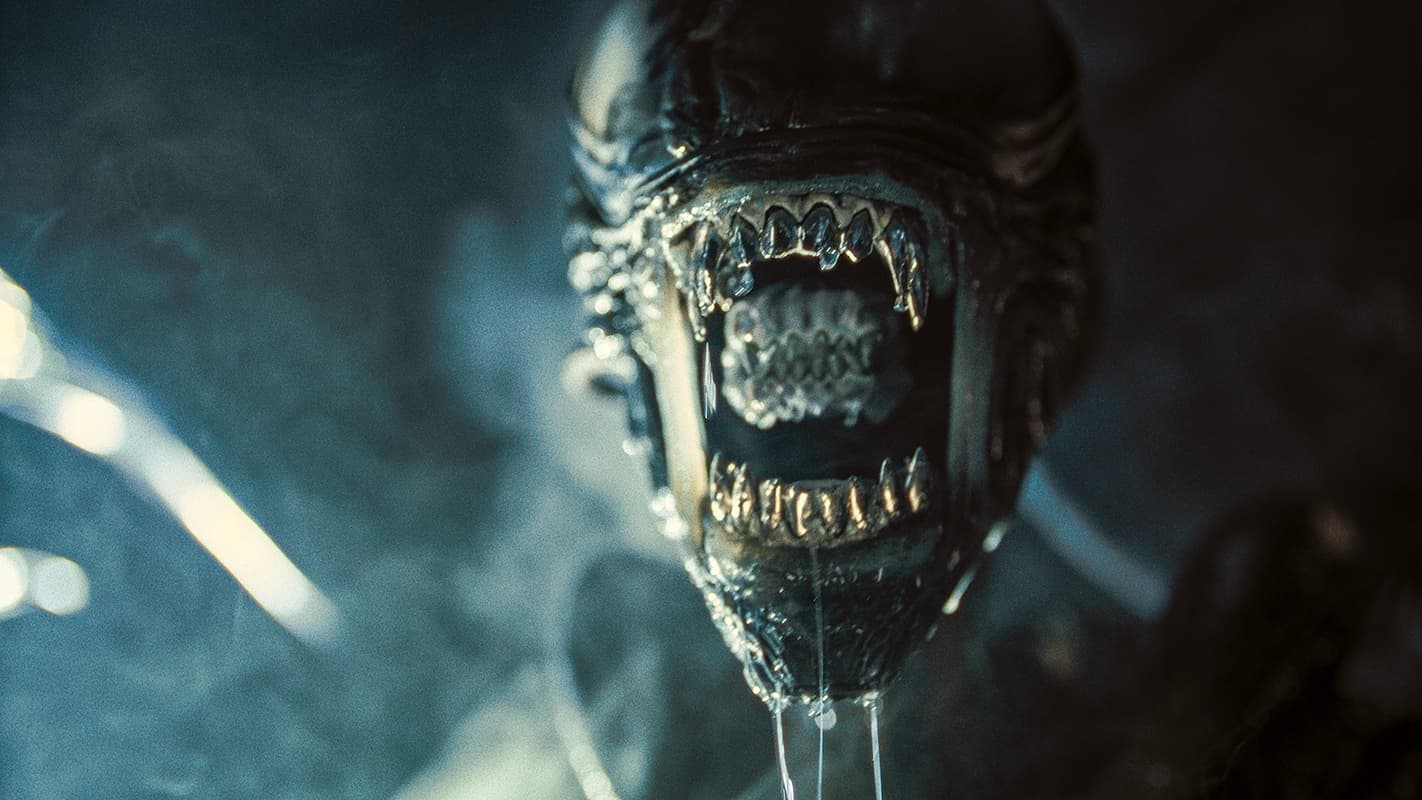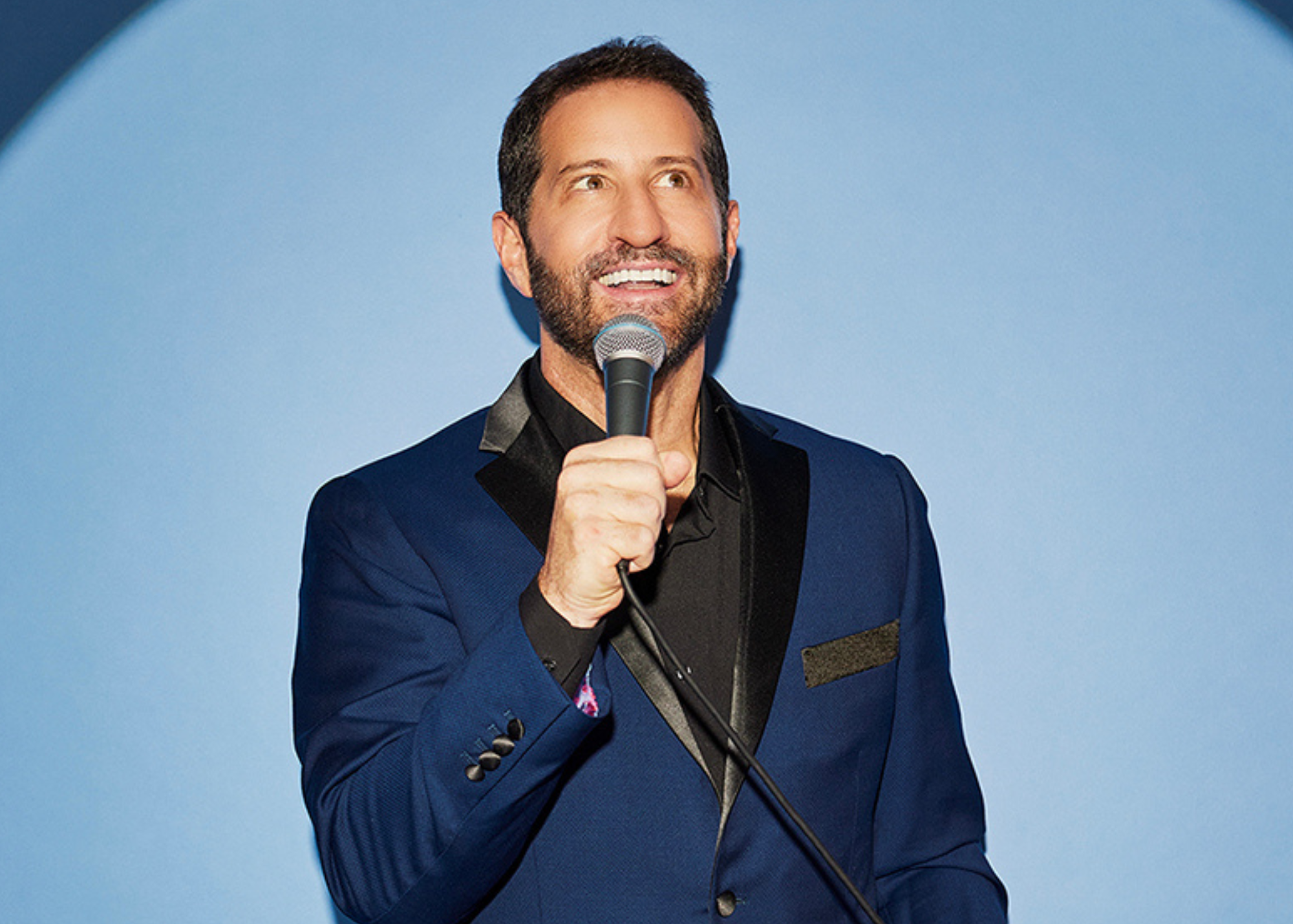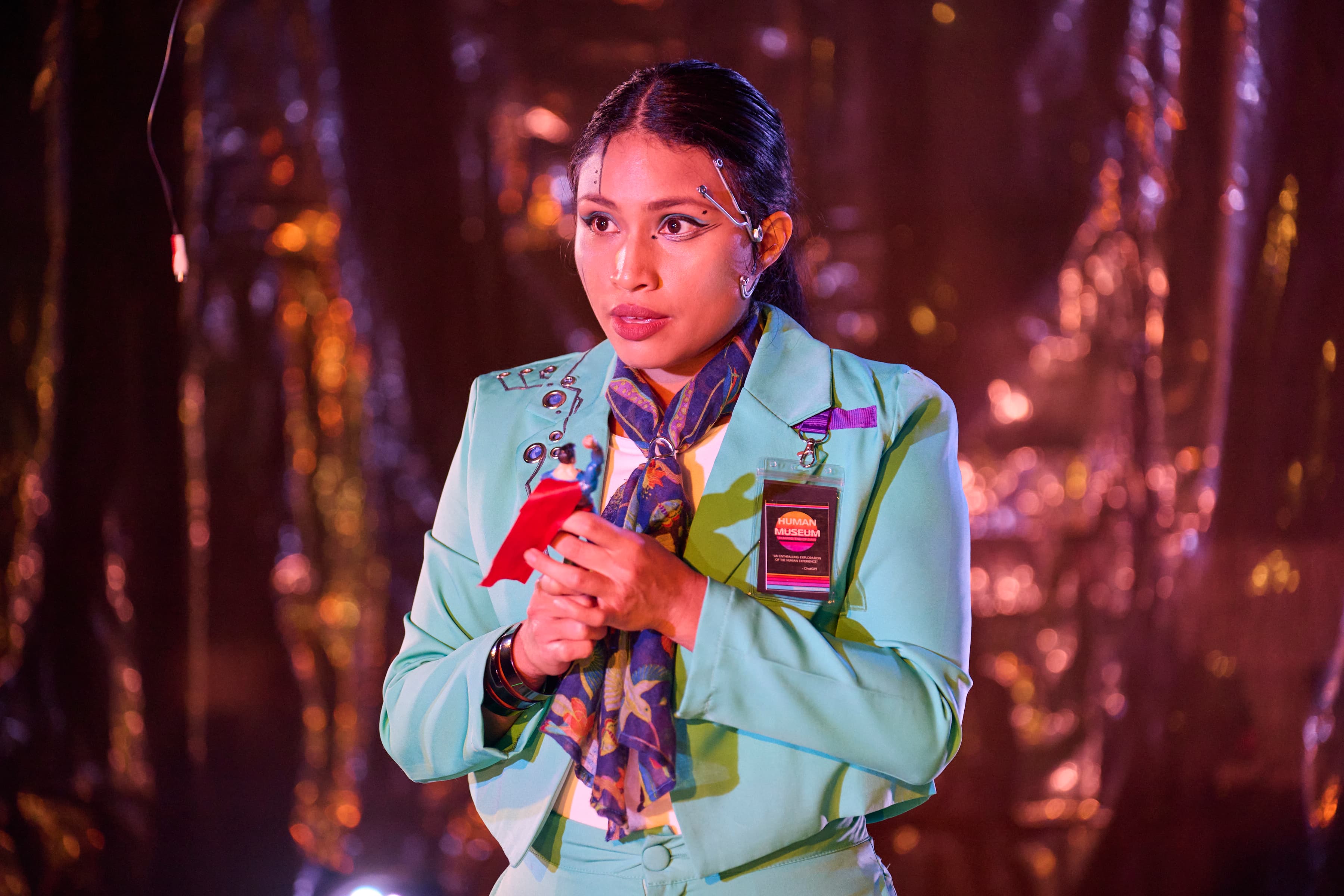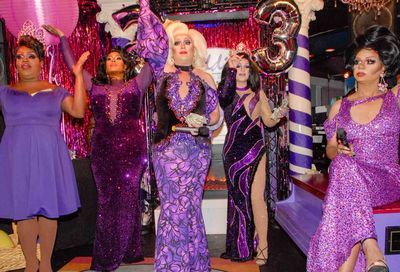Atomic Blonde: Our Film Critics Discuss ‘Barbie’ and ‘Oppenheimer’
Two critics are better than one to break down the films behind the summer's buzziest box office craze, "Barbie" and "Oppenheimer."
By André Hereford and Randy Shulman on July 22, 2023

Someday, in a secret lab deep under a desert mesa somewhere, leading scientific minds will study how the well-targeted release of two seemingly dissimilar Hollywood blockbusters exploded across the cultural zeitgeist into this monster called “Barbenheimer.”
Movie studios counter-program serious prestige dramas opposite upbeat action or comedy often and with much success. But something about the one-weekend punch of writer-director Greta Gerwig’s heavily-marketed, candy-coated fantasy-comedy Barbie and Christopher Nolan’s epic yet introspective, all-star cast biopic Oppenheimer spawned the summer’s most unlikely double feature.
The teams behind both films were smart enough to catch on to the public’s pitting the world’s most famous doll against the man who birthed the Bomb.
And the team behind this dual review, having completed the double feature in Barbie–Oppenheimer order, can report that both films are smart enough to recognize, respectively, the stereotypical girlishness that Barbie represents, and the inarguably patriarchal society that J. Robert Oppenheimer both represented and at times resisted.
Barbie, co-written by Ladybird and Little Women Oscar nominee Gerwig and her Oscar-nominated partner Noah Baumbach, actually turns examining the toy’s impact on generations of girls and women into its whole raison d’être. The movie’s lead Barbie, played pretty much to perfection by Margot Robbie, is the quintessential version of the doll, “Stereotypical” Barbie — blonde, blue-eyed, eternally effervescent.
Yet, she lives in a stunningly realized, life-sized plastic Barbie Land filled with Barbies of all shapes, races, complexions, occupations, and even genders, though that last aspect is referenced only via casting Hari Nef, best known for her role on Transparent, also as Barbie.
Issa Rae, delivering many of the film’s funniest lines, is chipper, inspirational President Barbie. Pop star Dua Lipa splashes up as Mermaid Barbie. All these women are Barbie, our Barbie explains. But who are we, really, and what happens when we die, Barbie wonders.
In a hilarious record-skip in her happy-go-lucky life, Barbie starts pondering existential questions that even Kate McKinnon’s wise Weird Barbie can’t answer. So she sets off through a portal, that somehow exists, to the real world to try and figure it all out, with the help of harried, hard-working mom, Gloria (America Ferrera, acing the role), and her severely sulky teenage daughter Sasha (Ariana Greenblatt).
Oh, and, of course, joining Barbie on her excursion is Ken, played by ever-ready Ryan Gosling as affably dumb, then cunning but still stupid as the male doll gets a mind to upset the power dynamics in his relationship with Barbie.
Ken, and all the other Kens, as diverse a cohort as the Barbies, get lots of screen time, including a gleeful dance number. Simu Liu is a standout dancer and foil as Gosling Ken’s smirking nemesis, and One Night in Miami star Kingsley Ben-Adir definitely finds his Kenergy as a Gosling Ken friend. But the Kens are all basically comic relief in what is already a comedy about taking the patriarchy down a peg or two or three.
Too bad for Ken he couldn’t rollerblade into the overwhelmingly male-dominated world of Nolan’s gravely riveting Oppenheimer. Employing the stark angles and features of star Cillian Murphy’s subtly expressive mien to great effect, Nolan gets into the head of the physicist, husband, father, womanizer, de facto politician, national hero, accused spy, and bomb-builder whose work changed the world forever.
Less concerned with depicting combat and destruction than in probing the man and the visions of a sub-atomic universe that fascinated him, the drama’s narrative proceeds through a non-linear succession of meetings and experiments and congressional hearings.
The film — shot alternately in crisp black-and-white and searing color by frequent Nolan collaborator Hoyte van Hoytema — is framed by two proceedings in particular: a heavily biased 1954 Atomic Energy Commission hearing to review Oppenheimer’s national security clearance, and Senate confirmation hearings in 1959 to seat businessman and AEC chairman Lewis Strauss as President Eisenhower’s Secretary of Commerce.
The outcome of the hearings, like the outcome of World War II, is a matter of history, but provides gripping suspense, as well as ample room for Robert Downey Jr. to blaze the screen with his portrayal of Strauss. Assuredly unfolding the nearly kaleidoscopic complexity of Oppenheimer’s former boss, Downey Jr. offers tempestuous contrast to Murphy’s cool, calculating Oppy, as the scientist is called by colleagues.
Oppenheimer’s wife, Kitty, played in another fiery performance by Emily Blunt, calls him Robert and stands up for her man even when it seems his friends, his bosses, and his government have hung him out to dry in the kangaroo court where he’s forced to fight for his career, his reputation, and his legacy.
The movie can’t solve its inherent problem that Oppy’s reputation amounts to very little against the tremendous losses and suffering of the Japanese in Hiroshima and Nagasaki.
So, Nolan simply doesn’t allow those losses onto the screen, except in a scene where Oppenheimer, an activist against the arms race his bomb inadvertently launches, watches with other scientists a slideshow depicting the horrific aftereffects of one of the bombs dropped on Japan. Murphy conveys the man’s guilt and ambivalence by the mere look in his eyes, or tone of his voice.
Several scenes deliver thrills from such actorly skill, including a verbal standoff between Oppy and Matt Damon’s amusingly snide military officer Leslie Groves, who hires the scientist to run the top-secret Manhattan Project. Their project ultimately succeeds, resulting in an equally arresting bomb test that, through brilliant editing and sound design, is as breathtaking as the filmmakers intended.
It’s hard to imagine, though, that Nolan and company might have intended for this sober examination of a misunderstood scientist to feature in a summertime box office showdown with the sly deconstruction of the bubblegum pink princess of American consumerism. Really, who would have thought?
Not us, which is why we took the unusual step to brave the nearly five-hour Barbenheimer double feature and return with a candid conversation between Metro Weekly film critics André Hereford and Randy Shulman.

ANDRÉ HEREFORD: I saw that you tweeted out your enthusiastic response to Oppenheimer. You mentioned that you believe Cillian Murphy, Emily Blunt, and Robert Downey Jr. would all win Oscars. You said win, which I want to clarify. Do you mean win or be nominated? Are you really going to go that far out on a limb for these folks in July without so many other movies having come out yet?
RANDY SHULMAN: I mean, it’s Twitter. I’m sure I’ll change my mind. But yeah, I probably should have said nominated. Although, I do think that Downey Jr. is going to win.
ANDRÉ: I agree, I agree. I think he has the inside track for sure.
RANDY: Unless something else comes along that beats this performance, it is the most complex. And when you go read a little bit more about Strauss and his vindictiveness, Downey’s performance becomes far more complex. Also, I think that Downey deserves it after years of playing Iron Man — and doing a great job at that — but, I mean, he just sinks himself into Oppenheimer in a way that was astonishing. I think Blunt’s probably a long shot. But I think Murphy very well might win. Just the tone of what he created in terms of Robert Oppenheimer, personifying him. The Academy loves giving Oscars to people who play historical characters. And he plays Oppenheimer, from what I understand and from what I’ve researched, to a tee. If you look at pictures, he even physically transformed himself into the man.
ANDRÉ: I put that not on just him, but Nolan. Because Nolan is detailed and a perfectionist. And I’m certain that not just dialogue but certain images were probably perfectly recreated from the real-life thing. I mean, I think Murphy is fantastic, and I’m certain he’ll be nominated. I don’t see how he could not be. I think Downey Jr. has one of those roles that… I think that for me a good example is Mahershala Ali in Green Book, where somebody is essentially a second lead. But you know they’re going to get nominated as supporting, and they are really what makes the movie go all the way up and over the hill toward its conclusion. There are rewards for that.
This movie makes it to its end because of Downey Jr.’s performance. And yeah, the story happens because of that character, and he carries all of that really, really well.
And Blunt — I think she has moments that’ll have people cheering. But in terms of a full-on performance, there’s plenty of room for other people to come along. I mean, Kitty Oppenheimer is brazenly unmaternal and sometimes unlikable. And that probably won’t win the character the goodwill that wins awards, but Blunt should win a lot of respect for how daringly she goes there. Because she is also a mother, so it’s got to be a complicated thing to play a woman who really hates being a mother.

RANDY: I will add to that that Blunt has an incredible scene in the final act, and that’s what people are going to remember — that incredible scene in the hearing. Just incredible.
ANDRÉ: Well, yeah, we’re going to all see that over and over again at the SAGs and the Oscars. That’s the clip.
RANDY: I would also posit that anything I write on Twitter to the 10 people that read me, including you, qualifies as personal hype. Also, I’m trying to counteract this swell of everyone on Film Twitter saying that Ryan Gosling is going to win an Oscar for Barbie.
ANDRÉ: Because you bring up the word hype, we can say that it’s all been over-hyped, mostly from the Barbie end. But now from the critics’ end on Oppenheimer — the “This is cinema” reviews are already coming out, and they’re just really over the top for me. But it’s met by the same kind of reactions to Ryan Gosling as Ken. It’s hard to pull off playing a real-life toy, and he does a good job, and he’s okay. But I am certain that he’s not going to clutch an Oscar for this part.
RANDY: I would be surprised if he got an Oscar nomination. I mean, it’s a good comedic role. But there’s really not that much to it. He’s a doll. He delivers the jokes really well. Besides, they rarely give nominations to comedic performances.
ANDRÉ: Let’s talk about the jokes in Barbie. They do an amazing thing realizing what a Barbie Land would look like and how it would function, down to the plastic cups filled with nothing that everybody’s drinking. But the jokes, I think, were sort of hit-and-miss, and a lot of those hit-and-miss jokes are Ken’s jokes. In Barbie Land, Ken creates his Mojo Dojo Casa House. And we get a whole bunch of jokes about Mojo Dojo Casa House, which might’ve been funny one or two times.
I think a lot of the Ken jokes get played out and aren’t super funny in the movie — like the Mojo Dojo Casa House. Ken not understanding that “casa” and “house” are the same thing is a little bit funny. But that’s sort of the level of humor that we’re getting. Whereas I think the filmmakers’ vision of how Barbie sees the world and how the world sees her, that’s where the sharpest humor is in the movie. People are loving, I guess, the goofiness of Ken. But for me, that’s not where the movie succeeds at all.
RANDY: How did you feel about Barbie overall? What did you think?
ANDRÉ: I went in thinking Greta Gerwig, if anybody, was going to do this well. She seemed like as good a filmmaker to put on it as anybody else. And Margot Robbie seemed like, absolutely as she went around the world, posing as Barbie on every red carpet, seemed like the perfect person. So I left the movie feeling like they had been the appropriate choices, because it seemed like they figured it out. Gerwig and her co-screenwriter, Noah Baumbach, came up with a really smart way to conceive how, first of all, Barbies might imagine their impact in the real world if they were sentient beings. And then how they might actually interact with the real world if that collision occurred. Their reasoning for how that occurs is silly, but it’s a silly movie.
The production design was amazing, and obviously colorful. It reminded me a great deal of the humor of Barb and Star Go to Vista Del Mar, which I think, because it was more of an adult-oriented movie, its silliness worked better for me. This movie is about uplifting girls and women, and exploring all sorts of things: diversity, gender, gender roles, consumer culture — so many different things really smartly. And it also had a great soundtrack full of music that you could bop your head to. Which is what you want in a summer blockbuster, for sure.
RANDY: I’m always skeptical of a movie that has so much hype going into it, but Barbie surprised me. I liked it more than I thought I would. I laughed pretty much throughout it, which is rare for me. But the thing is that two days later, I can’t remember any of the jokes. Granted, that may be old age. Also, I don’t know what jokes are going to catch on. The Casa joke actually may be the one that becomes a catchphrase. And you know that Mattel — and they even allude to it in the movie — is going to build this Mojo Dojo Casa House, and people are going to go out and buy it in droves.
I also really appreciated the production design, particularly at Barbie Land. The previews don’t really give away that everything is solid plastic. Even the pink sand of the beach is hard plastic, which I found very, very funny. I mean, they just live in this completely artificial, organically non-functional environment. A mirror, for instance, really isn’t a mirror, it’s just a round empty hole. I thought that aspect was very, very clever.
And I thought Robbie was perfect as Barbie. She played it as you would imagine the doll to be. I also really appreciated, as you said, the diversity. I had some particular favorites. I loved Issa Rae’s President Barbie. I thought she was just delightful in that role. And she has some great showcase moments.
ANDRÉ: She has great jokes.
RANDY: And she delivers them with an ebullience that’s just — she could have been the main Barbie. I mean, she just has this brightness. It’s almost glowing. I also loved some of the side characters. I loved Michael Cera’s Alan, this sort of failed Ken-friend doll. It was nice to see Cera clearly having fun with the role.
The thing I thought was interesting was the way the movie addresses merchandising. The fact that Midge is there but dismissed — a pregnant Barbie did not go over well, so Mattel discontinued it, as well as depicting several of the other Barbies that were discontinued, like a Video Screen Barbie and a Sugar Daddy Ken. The end credits reinforce that, and I would encourage people to stay through at least the visual portion of the credits, because they illuminate the history of the doll pretty efficiently.

ANDRÉ: For me, the end credits were a nice way to leave the movie after the disappointment of the actual conclusion of the film, which ventured so far into symposium territory that it didn’t even feel so much like a movie for a moment. That was to get across a message which is conveyed much more powerfully and dynamically earlier in the movie with a speech that America Ferrera gives, in sort of a funny plot twist, in order to wake up women in general. That speech is amazing. And America Ferrera is passionate in the role and delivers that speech with all the inspiration that’s intended, and none of the cheesiness that you get from the movie’s final minutes.
RANDY: The ending of the film really didn’t work for me, either. Everything that came before it was funny or interesting or clever, and had just the right amount of social commentary woven into it — it was fairly smart. But I don’t think they knew how to end the film. Or maybe they tried different endings and settled on the best of the worst.
ANDRÉ: Something like that.
RANDY: The ending just falls flat. The film sort of dies in the last five minutes. Now, that doesn’t negate my enjoyment of what came before, but it doesn’t help that Barbie doesn’t find a way to end.
ANDRÉ: That last scene lacks the energy that the rest of the movie has.
RANDY: I think a lot of people will disagree with us. Nothing is going to stop fans from loving every minute of this film, ending included, no matter what. But it will be interesting to see what the public does say.
I’ll tell you something else that didn’t work for me. The whole Mattel boardroom shtick. It was interesting that the Barbies were aware of Mattel as their creator. And so they basically have a god, so to speak. But the interesting thing was how the Mattel executives were shown as sort of bumbling Keystone Cops. They weren’t evil overlords. They were just sort of silly.
ANDRÉ: But they were sexist. Sexist and largely ineffectual at their jobs.
RANDY: They weren’t well-developed. They were just there for sort of this bumbling chase sequence, and nothing ever really came of the Mattel business, even once the executives got to Barbie Land, they were just men in suits completely out of place. It was just sort of like, “Let’s just sort of throw them in there and let them do some slapstick.”
ANDRÉ: You needed some antagonists other than reality, I guess. But yeah, it was Benny Hill or Austin Powers. That’s one of those things — that kind of slapstick physical comedy — that, again, I think Barb and Star did better and in a really similar milieu. So that’s why I keep bringing it up.
One thing that I won’t say I disliked about Barbie, but I was disappointed about: As we saw, Barbie Land was super diverse, and Barbie has a great line that all these women are Barbie. Barbie is all these women — and that includes a Barbie who is portrayed by a trans actress, Hari Nef. And Barbie is every job, every kind of woman, every shape and size and race and ethnicity, and they’re all presented in the movie, which is wonderful. We talk about their awareness. There is some awareness that they are dolls being played with by people in the real world.
And what the movie sort of acknowledges, despite all this diversity and inclusion, is that apparently only little girls play with these dolls, whether it’s the girl dolls or the Ken and Alan dolls. And, as I know from personal experience, and as we can see in the Metro Weekly Forum which is part of this issue, that lots of boys had really complicated experiences around these dolls and other action figures.
But because this doll was invented for girls, and this is a story about female empowerment, the movie really only tells a story from the point of view of how Barbie has impacted the girls who played with her. And I think that leaves out a really interesting slice of the story that, as you pointed out a couple of days ago, maybe will be in Barbie 2. And it’s not that they had to include it here, but I thought they might have, considering all the other ways they found to include everybody.
RANDY: At some point, in any filmmaking endeavor, you have to find a point of view and focus. It’s worse when they try to spread it out.
ANDRÉ: And that’s a segue to Oppenheimer.
RANDY: Before we do, I do want to make one added point about what you’re saying here. The other thing that they ignore is evil older brothers who take their sisters’ Barbies and rip their limbs or heads off. And I knew plenty of kids that I grew up with who would just torment —
ANDRÉ: Or yourself maybe?
RANDY: No. I did not torment my sister’s dolls. I don’t think. Maybe. It’s possible that Chatty Cathy did not survive me. Now, on to that Oppenheimer segue.
ANDRÉ: Perspective. One of the strongest things going for Oppenheimer is its sense of perspective. It jumps around chronologically — we’re seeing Cillian Murphy playing Oppenheimer at Cambridge as a really young man. We’ve seen him as an older man long after the bombs have dropped, and Oppenheimer is out there as an activist advocating for arms control. The movie bounces around, but the idea that we are in the shoes and in the head of Oppenheimer, as the movie’s poster suggests, is really strongly carried through the entire film. I think the movie loses something at the end, after the bombs have dropped. Christopher Nolan’s focus is so much on Oppenheimer and about how after that he had to fight to maintain his reputation, his legacy, and his career, that it obscures, omits, and completely dismisses the reality of any of the people who had bombs dropped on them.
Even though that effect is considered, it’s never shown. No Japanese is spoken in the film. No Japanese characters even interact with Oppenheimer in his post-war days — and I would assume he did have some interaction with Japanese people who had some effect on his life and mentality. So it’s just weird to me that the people who had the bombs dropped on them have no voice in this film at all. But that’s again because of the strong perspective, which is otherwise beautifully rendered.

RANDY: I don’t have as strong a feeling about that as you do. But I see your point — and it’s a powerful one. As I said to you the other day, I don’t think Oppenheimer was ultimately meant to be about the effects of the bomb on Hiroshima. It was about the effects of Robert Oppenheimer’s own internal realization of what he created, as well as his enthusiasm for what he was creating for the war effort.
The movie does something remarkable. It’s hard to follow at first. We’re in this hearing, we’re in that hearing, we’re in this hearing — it’s all these little bits and pieces. And it congeals into a focal point getting to the Trinity test midway through. And then, in the third act, everything comes together in this really artful way, bringing a full sense of drama to everything that we saw in the first hour. It was very skillful filmmaking. It was very artfully achieved, and I admire the fact that Nolan pulled it off so beautifully. Because there are some big wow moments there, big dramatic pulls that really get you and just draw you in. It totally worked for me.
ANDRÉ: I agree. The movie brings the chronology together and coalesces in a way that, even though you’re watching a Nolan movie where he tends to do this, he does it in a way that you didn’t see it happening and didn’t expect it. And you’re right that there is a sort of a wave of the realization — the eureka moment — of how he’s made all these bits and pieces come together to matter in the story that he’s telling in the final act.
It’s especially well done, because most of those bits and pieces are, as you said, hearings, briefings, debriefings, they’re conversations. I think to an excessive degree, Downey Jr.’s character is saddled with narrating Oppenheimer’s biography in the early parts of the movie. But ultimately that gives weight to his character having such an important role in the story.
But one thing I want to get back to — I guess clarify — is I think there are choices that Nolan made that could have still included Oppenheimer’s perspective on how the bomb was used and how any other bomb should be used that is affected by different experiences that we’re not going to see all entirely in this movie. And the choice to not include any of those moments that might’ve actually involved, as I said, people who the bombs fell on is a choice.
I also think a choice that I was looking out for was Nolan to include, with just at least a few lines, the scientist J. Ernest Wilkins Jr., who we see working in the Fermi-led lab in Chicago, one of the research labs contributing to the project. I’m glad that Nolan included one of the dozen or so Black scientists who worked on the project and in different capacities, in addition to the hundreds of support workers and custodial staff. And I will say again that it’s not their story either, but it’s a choice whether or not you let us know that those people existed and had a part and belong in stories like this, in movies like this. It’s a choice. Thank God he at least included one, because it would’ve been a different kind of choice to have none. And that would’ve been the wrong choice.

RANDY: It is something to go from the diversity of Barbie to the whiteness of Oppenheimer. It is a striking difference.
ANDRÉ: Which is, by the way, the way we did it. We saw Barbie one day and Oppenheimer the next.
RANDY: Most people I know are going to Oppenheimer first and then Barbie. That will actually make Barbie, as you pointed out to me yesterday, more enjoyable for them. They’ll even find it funnier after the heaviness.
I, on the other hand, actually found the gravity of Oppenheimer to be the perfect sort of — antidote isn’t really the right word, but it was the perfect follow-up to Barbie. Because I felt Barbie is a light, summer entertainment movie with some social commentary throughout. But with Oppenheimer, I felt like I was watching cinema. I was immersed in it, which is what Nolan intends.
My attention didn’t flag, although I do think it’s a little long. I was engaged by it. I was confused by it at points — I think most of us don’t really know that much about Oppenheimer other than he is considered the father of the atomic bomb. And I’m one of those people, and so now it made me think, even during the movie, I need to go read American Prometheus, the biography it’s based on. I want to learn more. I actually look forward to seeing the movie a second time. That first hour or so will make more sense. It’ll work in a different way because you know where it’s headed. I think it’s actually designed for repeat viewings.
ANDRÉ: I think Nolan in general thinks of repeat viewings when he’s making movies.
RANDY: But I do think it’s just an artful work of cinema. It feels like an important movie — and I feel it is an important movie. I’ve read a number of essays that we’re in our own Oppenheimer moment right now with scientists and AI. And it’s good to be reminded of where the atom bomb and the hydrogen bomb came from, and what their purpose was, and how it forever changed our world.
ANDRÉ: Except for those moments where they’re literally just feeding us people’s biographies, I think the movie did manage to convey Oppenheimer’s conscience through the acting and the script. I think Cillian Murphy is fantastic. His face is really sort of a special tool in filmmaking for him and for Christopher Nolan. And I think his internal journey was really vivid for me.
I don’t know a lot about quantum physics or quantum mechanics. But something I related to definitely, being married to a scientist, is how the movie portrays the relationship between science and government. The way that basically the government was full court press to recruit the scientists into this effort. And then afterward, more or less, just sort of feeding them to the dogs or leaving them to whatever their fate would be.
And seeing really from inside somebody who worked on “Operation Warp Speed,” it felt a lot like what I was seeing in the movie. That the government is like, “We need this right now!” And the way they not just enlist but pressure science to come up with the answers quickly.
And then once an answer is found and it’s out there, off in the world and nobody can stop it, how the government doesn’t really stand up for these guys and women when the criticism comes after the fact. Fauci was sort of hung out to dry by himself after this country really, really needed him. And that’s exactly the story that Oppenheimer was telling.
RANDY: There’s a line said by a scientist in the movie that bears this out: “They need us. Until they don’t.”
ANDRÉ: Yeah, I think it was Isidor Rabi’s line, and let’s mention that the actor who plays him, David Krumholtz, is fantastic in the movie.
RANDY: I’d love to see Krumholtz get a supporting actor nomination. His warmth and compassion makes for a great contrast to Oppenheimer’s chill. I think we can agree that the entire cast is terrific. Even in the smallest of roles, nothing goes to waste here.
ANDRÉ: Including one actor who has a single scene playing Harry Truman. And it was probably the most memorable scene in the movie for me. He was amazing.
RANDY: It’s an amazing realization who the actor is. They don’t hide it, really, but he’s a great Truman. I do want to point out the sound and the visuals during the Trinity test scene, which was done without CGI. The sound especially during that moment was so shattering, my Apple Watch literally displayed a “loud environment alert.” Nolan has said that he wanted people to feel like they were in a nuclear blast. I think he achieved it. And I think that is as close as I want to get.
We should also point out that it was screened for us in 70mm film, but not IMAX. Find a theater near you, I would say, playing it in at least 70mm if you can, and, if you’re lucky enough, 70mm IMAX. Film — rather than digital projection — gives it a depth that is both perceptible and imperceptible at the same time, if you know what I mean.
ANDRÉ: I do. Also, since we’re making the comparisons, Oppenheimer is perceptibly different than what Barbie looks and feels like. I mean, obviously a great deal of care went into shooting and designing that movie, too. But in terms of how it’s assembled — the fundamentals of filmmaking and all of that — Oppenheimer just feels like a movie that, with or without the sound, you get a story. And adding every other element plus what you’re seeing on screen, it hits you even deeper than just getting the story. I didn’t really get that deep hit from Barbie.
RANDY: My friend Norman pointed out to me that if you’re in the Washington, D.C. area, you can see it in IMAX 70mm film in King of Prussia, Pennsylvania, which is about two hours away. So it’s probably worth the two-hour drive if you can get tickets to see it in King of Prussia.
ANDRÉ: If I were going to take a two-hour drive to see something in IMAX right now, it would not be Oppenheimer or Barbie or even Theater Camp, which is also being reviewed this week, and I love. It would be Mission Impossible: Dead Reckoning. That is something I want to see again as big and loud as possible. Because that is the true movie of the summer, in my opinion.
RANDY: Is the hype around these two movies justified, and what do you think of the “Barbenheimer” phenomenon?
ANDRÉ: Well, the phenomenon was off-putting, I’ll say. It was more than enough for me. And also, just as somebody who considers Margot Robbie a really talented actress, who did not get her due for Babylon, and who thinks that she seems like a really lovely person, she looked exhausted by the end of this press tour, because the Barbie stuff was pushed so hard. Apparently, every bit of press wanted a piece.
So you can’t blame the marketing department for striking while the iron was hot. People are interested in this movie — I think intrigued, because they had no idea how they were going to do it. So they played into the hype in a way that they’re going to make a hundred million dollars their first weekend. They’ll say the hype was justified. Like I said, I found it off-putting. The Oppenheimer part of it was really not the off-putting part. That was much more low-key, but they’re both going to make more money and get more attention for it. And I like the movie business, so that’s a good thing.
RANDY: Does calling it “Barbenheimer” diminish the historical and social impact of what Oppenheimer is trying to convey to us all? Does it turn it into a bit of a joke where it really doesn’t deserve to be a joke at all?
ANDRÉ: Well, maybe that’s okay. Because that means people will be disarmed, no pun intended. They’ll go in — this is just the first half of their double feature — and they’ll come out of it thinking, as you pointed out and as the movie really clearly suggests, that what we’re living through in AI is a similar Pandora’s Box, cat-out-of-the-bag, what’s-going-to-happen-now, moment in time. I think it comes through in the movie. And maybe people can have that experience — and then go and laugh their asses off at Barbie.
Barbie and Oppenheimer are playing in theaters nationwide. Visit www.fandango.com.
Film: Spring Arts Preview 2024
Somewhere on this list is the 2024 film you've been waiting for -- and your wait is almost over.
By André Hereford on March 31, 2024 @here4andre
READ THIS STORY IN THE MAGAZINE
This time last year, none of us had ever heard the word Barbenheimer. Barbie, listed in our 2023 spring movie preview, and Oppenheimer, which was not, had yet to assert their primacy over the year's box office and pop culture conversation.
Few conceived those two films would spark a phenomenon that rippled through media, fashion, merchandising, music, and awards show after awards show after awards show.
After all the hype and hot takes, red carpet looks, historic victories and milestones, the Barbenheimer convo only really finally abated with the Oscar wins that shuffled Barbie, Ken, and Oppy off the stage in March, ushering cinema into the spring/summer season.
Modi’s Mission to Entertain the Jews, the Gays, and the Goyim
Stand-up comic Modi is genuinely excited about bringing his "Know Your Audience" tour to D.C.'s Kennedy Center.
By Will O'Bryan on April 10, 2024
Modi Rosenfeld, better known as simply the mono-monikered Modi, does not consider himself political. Primarily, he's Jewish. Then gay. His role as a comedian is near the top. But political?
"100 percent not," Modi insists. "Not at all."
Still, the Israel-born, Long Island-raised Modi knows his way around a political arena. His turn at roasting the famous in the service of Commentary magazine is testament. During the Donald Trump administration, the guest of honor was former senator Joe Lieberman. The best line, however, was aimed at one of Lieberman's senatorial siblings, in that period of Senate confirmation hearings for Trump's raft of Supreme Court nominations.
‘Human Museum’ Puts the Bots in Charge (Review)
Rorschach’s thought-provoking trip to "Human Museum" plays a chilling sci-fi premise primarily for laughs.
By André Hereford on April 25, 2024 @here4andre
Consistent with Rorschach Theatre’s adventurously immersive productions, the company’s latest, Human Museum by Miyoko Conley, engages audiences in playful conversation with its themes well before the show even begins.
Audiences enter through the titular museum, a hallowed institution operated by robots of Earth in a future where humans are extinct. Created inside the same two-story Connecticut Avenue former retail space where, last fall, Rorschach unleashed Night of the Living Dead Live, the Human Museum passes patrons through galleries filled with artifacts of human existence.
Support Metro Weekly’s Journalism
These are challenging times for news organizations. And yet it’s crucial we stay active and provide vital resources and information to both our local readers and the world. So won’t you please take a moment and consider supporting Metro Weekly with a membership? For as little as $5 a month, you can help ensure Metro Weekly magazine and MetroWeekly.com remain free, viable resources as we provide the best, most diverse, culturally-resonant LGBTQ coverage in both the D.C. region and around the world. Memberships come with exclusive perks and discounts, your own personal digital delivery of each week’s magazine (and an archive), access to our Member's Lounge when it launches this fall, and exclusive members-only items like Metro Weekly Membership Mugs and Tote Bags! Check out all our membership levels here and please join us today!
The Magazine
-
Most Popular
 George Santos, Duped by NAMBLA Prank, Exits Race for Congress
George Santos, Duped by NAMBLA Prank, Exits Race for Congress  Trolls Hate on No. 1 NFL Draft Pick for Pink Phone and Nail Polish
Trolls Hate on No. 1 NFL Draft Pick for Pink Phone and Nail Polish  'Challengers' is a Sexy, Ripping Love Match (Review)
'Challengers' is a Sexy, Ripping Love Match (Review)  Ralph Fiennes and Indira Varma Soar in STC's 'Macbeth' (Review)
Ralph Fiennes and Indira Varma Soar in STC's 'Macbeth' (Review)  For Don Mancini, Chucky is So Much More Than a Killer Toy
For Don Mancini, Chucky is So Much More Than a Killer Toy  The Awesome Power of Katy O'Brian
The Awesome Power of Katy O'Brian  The Powerful Story Behind David Archuleta's ‘Hell Together’
The Powerful Story Behind David Archuleta's ‘Hell Together’  California Mayor Recalled After Coming Out as Transgender
California Mayor Recalled After Coming Out as Transgender  Grindr is Being Sued for Sharing HIV Statuses
Grindr is Being Sued for Sharing HIV Statuses  GLOW's Secret Garden Is An "Escape...With A Chill Vibe"
GLOW's Secret Garden Is An "Escape...With A Chill Vibe"
 'Challengers' is a Sexy, Ripping Love Match (Review)
'Challengers' is a Sexy, Ripping Love Match (Review)  'Human Museum' Puts the Bots in Charge (Review)
'Human Museum' Puts the Bots in Charge (Review)  George Santos, Duped by NAMBLA Prank, Exits Race for Congress
George Santos, Duped by NAMBLA Prank, Exits Race for Congress  Grindr is Being Sued for Sharing HIV Statuses
Grindr is Being Sued for Sharing HIV Statuses  Judge Blocks Ohio's Anti-Transgender Bans
Judge Blocks Ohio's Anti-Transgender Bans  D.C. Courts Pop-Up Businesses Ahead of WorldPride
D.C. Courts Pop-Up Businesses Ahead of WorldPride  Cher to be Inducted in the Rock & Roll Hall of Fame
Cher to be Inducted in the Rock & Roll Hall of Fame  Texas Governor Wants to Ban Trans People from Being Teachers
Texas Governor Wants to Ban Trans People from Being Teachers  For Don Mancini, Chucky is So Much More Than a Killer Toy
For Don Mancini, Chucky is So Much More Than a Killer Toy  LGBTQ Teen Sues School Over Suspension For Rap Lyrics
LGBTQ Teen Sues School Over Suspension For Rap Lyrics
Scene
Metro Weekly
Washington's LGBTQ Magazine
P.O. Box 11559
Washington, DC 20008 (202) 638-6830
About Us pageFollow Us:
· Facebook
· Twitter
· Flipboard
· YouTube
· Instagram
· RSS News | RSS SceneArchives
- "We use cookies and other data collection technologies to provide the best experience for our customers. You may request that your data not be shared with third parties here: "Do Not Sell My Data
Copyright ©2024 Jansi LLC.










